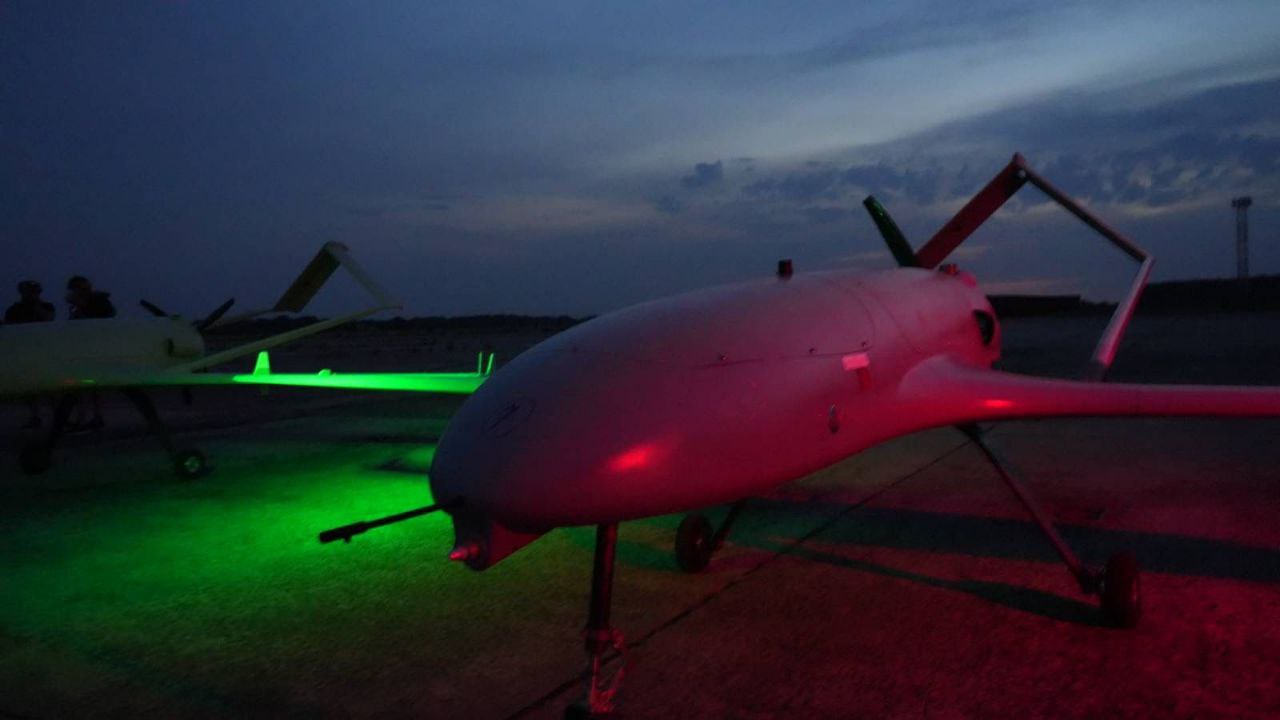Revolutionizing Defense with Collaborative Drone Manufacturing for Enhanced Airspace Security

Advancements in Collaborative Drone Manufacturing: A New Era in Defense Technology
The landscape of unmanned aerial systems is rapidly evolving, driven by strategic partnerships and innovative technologies. A notable development has emerged from a recent collaboration between an Eastern European nation and a leading North American aerospace enterprise, marking a decisive step in the production of advanced aerial vehicles designed for defense applications. This initiative, announced publicly during a high-level diplomatic visit to a Northern European country, emphasizes a significant ramp-up in the manufacture of various drone types, with a clear focus on those equipped to intercept and neutralize airborne threats.
The cooperation agreement involves the joint fabrication of a substantial fleet of unmanned vehicles within the current calendar year, with projections indicating a scale-up in output next year. These machines include interceptor drones engineered to dismantle hostile aerial incursions such as enemy drones and missile systems, reconnaissance quadcopters that enhance battlefield surveillance capabilities, and long-range strike drones capable of precise offensive operations. The strategic partnership not only enhances production volume but also integrates cutting-edge autonomous technologies, advancing the defensive prowess of the involved nation’s armed forces.
Central to this collaboration is the sharing of expertise and resources to boost manufacturing efficiency and technological innovation. The American partner, a company recognized for its specialization in autonomous drone systems with embedded artificial intelligence, works closely with domestic engineers and military experts to customize and rigorously test these aerial platforms under operational conditions. This synergy aims to optimize the drones’ performance parameters, including their detection, tracking, and engagement capabilities, critical for maintaining airspace security in contested environments.
Leadership from both sides has underscored the critical importance of prioritizing the production of drones capable of intercepting enemy aerial threats. This emphasis reflects the dynamic nature of modern warfare, where airborne unmanned systems have become pivotal both offensively and defensively. The capacity to efficiently produce interceptor drones—designed to engage and neutralize hostile drones and missile systems—addresses a pressing need for enhanced aerial defense layers. The envisaged output scale, involving hundreds of thousands of units initially, is a testament to the urgency and magnitude of this strategic objective.
Furthermore, the initiative broadens beyond interceptors to include specialized reconnaissance drones equipped for fire adjustment and intelligence gathering, which provide real-time situational awareness indispensable in complex combat scenarios. Medium-class strike drones feature prominently as well, extending the operational reach and tactical versatility of defense forces. Together, these unmanned systems contribute to a layered defense architecture, integrating surveillance, interception, and precision strike capabilities.
Additional innovations are also on the development horizon, including the creation of advanced cruise and ballistic missile interceptors, autonomous turret systems, and sophisticated reconnaissance platforms. These emerging technologies promise to elevate the responsiveness and lethality of defense operations, leveraging automation and AI to counter increasingly sophisticated threats.
The cooperation agreement not only signifies a boost in production but also embodies a long-term strategic partnership focused on joint development and defense enhancement. This vision extends beyond immediate operational demands, aiming to foster continuous innovation and capacity building that can adapt to evolving challenges in aerial security. The commitment to cost-effective production under preferential terms highlights the practical considerations integral to sustaining such large-scale manufacturing efforts.
The geopolitical context surrounding this industrial collaboration underscores the critical role of unmanned aerial systems in contemporary defense strategies. With adversaries actively investing in unmanned technologies and expanding their aerial strike capabilities, the need for efficient countermeasures and defensive systems has never been greater. This partnership reflects a proactive approach to ensuring technological parity and enhancing deterrence capabilities.
Moreover, the domestic industry has demonstrated significant potential to increase production capacity, already showing readiness to boost manufacturing output substantially within the current year. However, to realize this potential fully, investments and expanded cooperation remain vital. The strategic alliance represents a key element in addressing these needs by pooling technological expertise, financial resources, and operational experience.
This initiative also shines a spotlight on the broader importance of fostering international collaboration in defense technology. By combining the strengths of domestic innovation ecosystems with established global aerospace expertise, such partnerships accelerate the development and deployment of next-generation defense platforms. Furthermore, the integration of artificial intelligence and autonomous systems into drone technology is setting new standards in aerial combat effectiveness and operational autonomy.
Looking ahead, the continued scaling of manufacturing capabilities and the introduction of novel drone variants will contribute to a robust and adaptable defense posture. This comprehensive approach enhances aerial defensive measures, from early detection and reconnaissance to the interception of threats and precision strikes, underscoring the multifaceted role of unmanned aerial systems in safeguarding national security.
As the partnership flourishes, it signals a transformative shift in how unmanned aerial vehicles are developed and deployed, emphasizing agility, innovation, and sustainable production. Defense stakeholders and industry participants alike are poised to benefit from the technological advancements and scaled production this cooperation enables.
In conclusion, the recently forged industrial alliance stands as a landmark achievement in aerial defense technology manufacturing, poised to meet contemporary and future challenges with a diverse fleet of advanced drones. The prioritization of interceptor systems alongside reconnaissance and strike drones reflects a holistic defense strategy, aligning cutting-edge technologies with strategic imperatives. Continued support, investment, and collaboration will be essential to fully realize the potential of this ambitious endeavor, ensuring enhanced operational capabilities and sustained security in an increasingly complex airspace environment.
